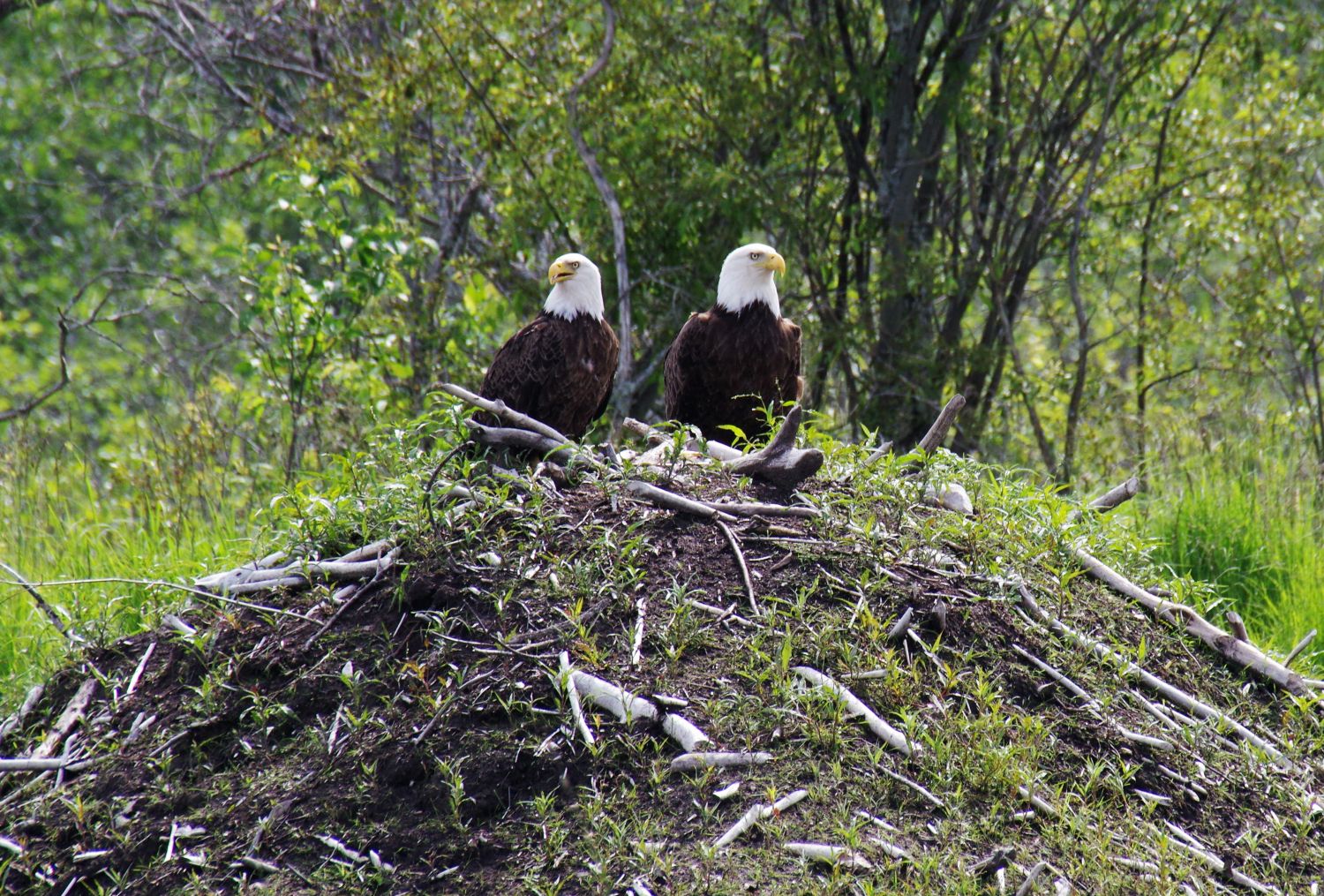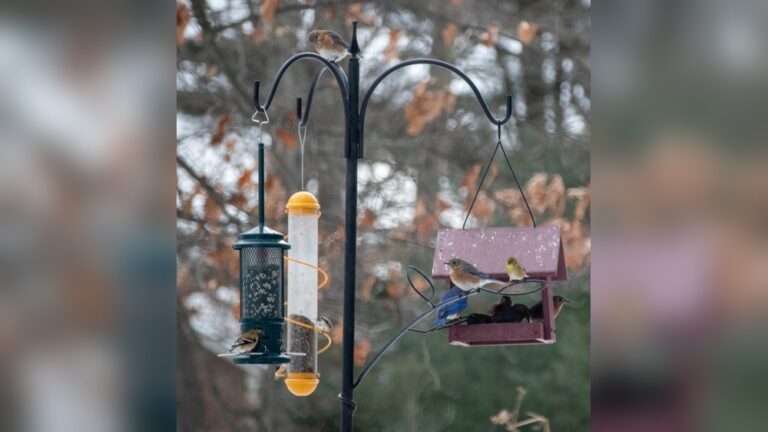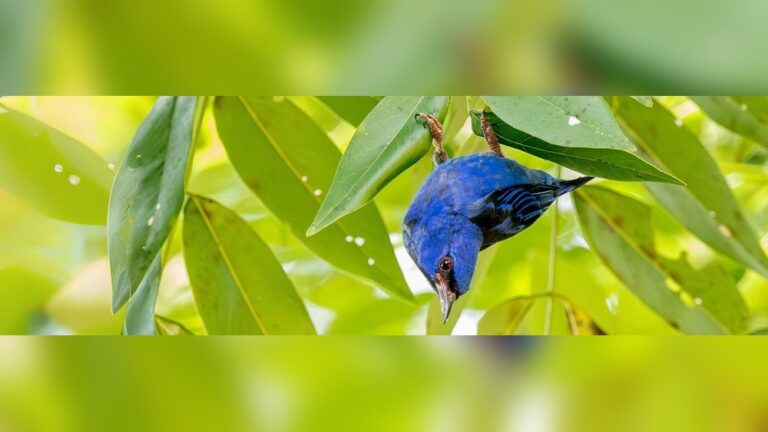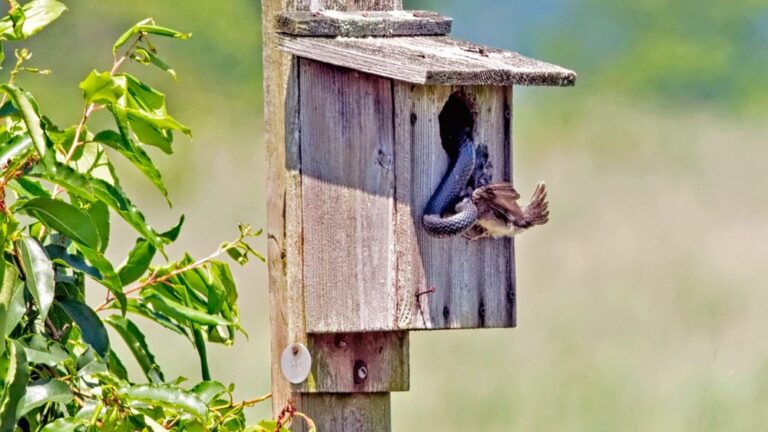10 Birds Of Prey In Ontario Canada
Have you ever stopped to watch a bird soaring high above, effortlessly scanning the ground below? In Ontario, Canada, the skies are home to some of the most powerful and fascinating birds of prey.
These incredible hunters play a vital role in nature, and spotting one can be a thrilling experience. Whether you’re a seasoned birdwatcher or just curious about the wildlife around you, knowing which birds to look for will make your outdoor adventures even more exciting.
Get ready to discover 10 amazing birds of prey that call Ontario home—and learn what makes each of them so unique. Your next unforgettable wildlife encounter could be just a flight away!
Bald Eagle
The Bald Eagle is a powerful bird of prey found in Ontario, Canada. It is a symbol of strength and freedom. This majestic bird is easy to recognize by its white head and tail. Bald Eagles play an important role in the ecosystem. They help control fish and small animal populations.
Ontario’s lakes and rivers provide the perfect home for these birds. Bald Eagles build large nests high in tall trees or cliffs. They are often seen soaring high in the sky or perched near water.
Habitat And Range
Bald Eagles live near large bodies of water like lakes and rivers. They need clean water for fishing. Ontario’s forests offer many tall trees for nesting. These birds can be found across the province, especially near the Great Lakes. In winter, some Bald Eagles move south, but many stay year-round.
Physical Features
Adult Bald Eagles have a white head and tail with a dark brown body. Their sharp yellow beak helps tear fish and meat. They have strong legs and big talons to catch prey. Their wingspan can reach up to seven feet. This helps them glide and soar for long distances.
Hunting Techniques
Bald Eagles hunt mainly for fish. They fly low over water and spot prey with keen eyesight. They dive quickly and grab fish with strong talons. Sometimes, they steal food from other birds. Bald Eagles also eat small mammals and birds when fish are scarce.

Credit: visitsunsetcountry.com
Red-tailed Hawk
The Red-tailed Hawk is a common bird of prey in Ontario, Canada. It is known for its broad wings and reddish-brown tail. This hawk often soars high, scanning fields and forests for food. It plays an important role in controlling rodent populations. Many bird watchers enjoy spotting this majestic raptor in open areas.
Identification Tips
The Red-tailed Hawk has a reddish tail, which is easy to spot. Its body is brown on top and pale underneath. Look for a dark band across the belly. It has broad, rounded wings and a short, wide tail. In flight, it often soars in circles with wings held in a slight dihedral.
Diet And Prey
This hawk mainly eats small mammals like mice, rabbits, and squirrels. It also hunts birds, reptiles, and insects sometimes. It swoops down from a high perch to catch prey on the ground. The Red-tailed Hawk can eat animals much larger than itself. It helps keep the ecosystem balanced by eating pests.
Nesting Habits
Red-tailed Hawks build large nests out of sticks. They usually place nests high in tall trees or on cliff ledges. The female lays 1 to 3 eggs each year. Both parents take turns sitting on the eggs and feeding the young. The chicks leave the nest after about six weeks but stay near parents for some time.
Cooper’s Hawk
The Cooper’s Hawk is a common bird of prey in Ontario. It is medium-sized with sharp talons and a hooked beak. This hawk is known for its agility and speed. It hunts mostly small birds and mammals. The Cooper’s Hawk often lives near forests and suburban areas. It adapts well to places where humans live. Its plumage is a mix of gray and brown with a barred chest.
Behavior Patterns
Cooper’s Hawks are secretive and quick. They hunt by stealth, moving through trees silently. They often wait on a perch before attacking prey. These hawks can be aggressive during hunting. They sometimes steal food from other birds. They use surprise to catch birds in flight or on the ground. Their behavior changes with the seasons, focusing on food and safety.
Flight Style
Their flight is fast and low through trees. They flap their wings quickly and glide between branches. This style helps them chase birds in dense woods. They can make sharp turns and sudden stops. Their flight looks smooth but powerful. This agility helps catch agile prey.
Breeding Season
Cooper’s Hawks breed in spring, usually from April to June. They build nests high in trees. Both male and female help build the nest. The female lays 3 to 5 eggs. She stays on the eggs while the male hunts. Chicks hatch after about a month. Parents feed the young until they can fly. Young hawks leave the nest after six weeks.
Northern Goshawk
The Northern Goshawk is a powerful bird of prey found in Ontario, Canada. It has a strong body and sharp eyes. This raptor is famous for its speed and hunting skills. It can fly fast through thick forests to catch its prey.
Northern Goshawks are large hawks with gray feathers and bold white eyebrows. They are silent hunters that can surprise their prey quickly. These birds are important in keeping the forest ecosystem healthy.
Preferred Environment
Northern Goshawks like dense forests with tall trees. They often live in mature coniferous or mixed woodlands. These birds need large areas to hunt and nest. They build nests high in trees, away from danger. Ontario’s vast forests provide a perfect home.
Feeding Strategies
This bird hunts during the day using sharp eyesight. It flies low and fast through trees to catch birds and small mammals. Northern Goshawks can change direction quickly to catch prey. They eat squirrels, rabbits, and other small animals. Their strong talons help them hold on tight.
Conservation Status
The Northern Goshawk is not endangered but faces some threats. Loss of large forests reduces its hunting and nesting areas. Conservation efforts protect forests and monitor goshawk populations. People are working to keep their habitats safe. This helps the goshawks survive in Ontario.
American Kestrel
The American Kestrel is the smallest falcon found in Ontario. It stands out with its bright colors and sharp eyes. This bird of prey is common in open fields and urban areas. It plays a key role in controlling insect and small rodent populations.
Size And Appearance
The American Kestrel is about 9 to 12 inches long. Its wingspan measures around 20 to 24 inches. Males have blue-gray wings and rusty backs. Females show more brown with black barring. Both sexes have two black stripes on their faces. Their small size and colorful feathers make them easy to spot.
Hunting Habits
This bird hunts from perches or while hovering in the air. It eats insects, small birds, and rodents. The kestrel uses sharp talons to catch prey quickly. It often hunts in open fields and along roads. Its keen eyesight helps spot prey from a distance. The kestrel hunts mostly during the day.
Migration
American Kestrels in Ontario migrate south for winter. They travel to the southern United States and Mexico. Migration usually starts in late September or October. Birds return north in early spring to breed. Some kestrels stay in Ontario all year if food is enough. Migration helps them survive cold winters.
Osprey
The osprey is a large bird of prey found across Ontario. It is known for its distinctive white belly and dark eye stripe. This bird lives near lakes and rivers. It depends on fish for food, making it a skilled hunter. The osprey plays a key role in the ecosystem by controlling fish populations. Its presence shows clean water and healthy habitats.
Fishing Techniques
The osprey hunts by diving into water. It spots fish from high above. It hovers then plunges feet first. Sharp talons grab slippery fish quickly. The bird shakes off water before flying away. It eats fish while perched on a branch. Ospreys catch fish up to 2 pounds. They rarely miss their target.
Nest Locations
Ospreys build large nests near water. They use sticks, grass, and moss. Nests appear on tall trees or poles. Sometimes on man-made platforms too. These nests grow bigger each year. Ospreys return to the same nest site. This helps protect eggs and young chicks. Nests often face open water for easy access.
Seasonal Movements
Ospreys migrate south for winter. They leave Ontario in late fall. They fly thousands of miles to warmer places. In spring, they return to breed. Migration follows food availability closely. Young ospreys learn routes from parents. These birds depend on seasonal fish patterns. Migration keeps the osprey strong and healthy.
Great Horned Owl
The Great Horned Owl is one of the most common and powerful birds of prey in Ontario, Canada. This owl is easy to recognize by its large size and distinctive ear tufts that look like horns. It is a top predator in its habitat and plays a vital role in controlling rodent populations.
Great Horned Owls live in many environments, including forests, cities, and farmland. Their adaptability helps them survive in various places across Ontario. They are mostly active at night, which helps them avoid competition with other birds.
Nocturnal Behavior
Great Horned Owls are mainly active after sunset. They use the cover of darkness to hunt quietly. Their excellent night vision and silent flight give them an advantage. These owls rest during the day in dense trees or high branches. Nighttime is their prime hunting time.
Vocalizations
The Great Horned Owl has a deep, hooting call. Their sound is often described as “hoo-hoo-hoo.” This call helps them mark their territory and find mates. You can hear their calls echoing in the forest at night. Each owl has a unique voice pattern.
Prey Selection
Great Horned Owls eat many types of animals. They hunt mammals like rabbits, mice, and squirrels. They also catch birds, including other owls and ducks. Their strong talons allow them to catch large prey. This owl’s diet helps keep the ecosystem balanced.

Credit: cottagelife.com
Snowy Owl
The Snowy Owl is one of the most striking birds of prey in Ontario. Its white feathers help it blend with snowy landscapes. This owl is large and powerful, with bright yellow eyes. People often spot it in winter across open fields and shorelines.
The Snowy Owl is famous for its beauty and strong hunting skills. It has a quiet, smooth flight and sharp talons. Watching this owl is a treat for bird lovers and photographers alike.
Arctic Visitors
Snowy Owls come from the Arctic tundra. They migrate south to Ontario during winter. This movement happens when food is scarce in the north. These visitors sometimes stay until early spring. Their arrival marks the start of Ontario’s cold season.
Winter Habits
During winter, Snowy Owls hunt mainly by day. They rest on open ground or fence posts. These owls are very patient and wait quietly for prey. Snow cover helps them hide from both prey and threats. Cold weather does not bother these tough birds.
Diet
Snowy Owls eat mostly small mammals. Lemmings are their favorite food in the Arctic. In Ontario, they hunt mice, voles, and rabbits. They also catch birds like ducks or grouse. Their strong beak and claws help them catch and kill prey quickly.
Sharp-shinned Hawk
The Sharp-shinned Hawk is one of the smallest birds of prey in Ontario. It is quick and nimble, hunting small birds with great skill. This hawk often moves through dense trees and bushes. Its sharp eyes help it spot prey from a distance. Many bird watchers enjoy spotting this hawk during migration seasons.
Size Comparison
The Sharp-shinned Hawk is about the size of a crow but slimmer. Females are larger than males. Males measure around 9 to 12 inches in length. Females can reach up to 14 inches. Their wingspan ranges between 17 and 22 inches. This small size helps them move quickly through forests.
Agility In Flight
Sharp-shinned Hawks fly with fast, sharp wing beats. They twist and turn easily to catch prey. Their short, rounded wings and long tails aid in quick moves. They often fly low, darting through thick branches. This agility helps them surprise small birds and squirrels.
Breeding Grounds
These hawks build nests in dense forests across Ontario. They prefer mixed woods with plenty of cover. Nests sit high in conifer or deciduous trees. The female lays 3 to 6 eggs each season. Both parents share duties of feeding and protecting chicks. Young hawks leave the nest after about a month.
Merlin
The Merlin is one of the smallest falcons found in Ontario, Canada. It is a fierce bird of prey with a bold personality. Despite its size, the Merlin shows impressive power and speed. It often surprises bird watchers with its swift flights and sharp hunting skills.
Speed And Agility
Merlins are very fast flyers. They can reach speeds up to 50 miles per hour. Their agility helps them change direction quickly. This ability is useful when chasing small birds through trees. Their sharp wings and lightweight bodies make swift movements possible. Speed and agility help Merlins catch prey mid-air.
Hunting Style
Merlins hunt mostly small birds and insects. They use surprise attacks from low perches or open skies. They chase prey in quick, short bursts of flight. Unlike some birds of prey, Merlins rarely soar high. They prefer to stay low and use cover to approach prey. Their hunting style is fast and direct.
Habitat Preferences
Merlins live in forests, open woodlands, and grasslands. They often nest in tree cavities or old nests. In Ontario, they favor areas near water and open fields. These places provide good access to prey. Merlins adapt well to both rural and suburban areas. Their habitat choice supports their hunting and nesting needs.
.jpg;w=960;h=640;bgcolor=000000)
Credit: www.barrietoday.com
How Smart Pets Lover Can Help You with 10 Birds Of Prey In Ontario Canada
Practical Learning Through Ontario’s Birds of Prey
Exploring the majestic Bald Eagle soaring over Ontario’s lakes or spotting the swift American Kestrel darting through the trees offers more than just a beautiful sight. These encounters invite us to deepen our understanding of local ecosystems and the vital roles these raptors play in maintaining balance. As you observe the Red-tailed Hawk’s keen hunting skills or the Great Horned Owl’s nocturnal habits, consider how their behaviors can inspire thoughtful care and respect for all birds, including those we keep as companions.
At Smart Pets Lover, we believe every interaction with wildlife enriches our connection to nature and sharpens our approach to responsible pet ownership. Whether you’re a seasoned birder or just beginning to appreciate birds of prey, learning about their unique traits encourages curiosity and empathy—qualities that benefit all animal lovers.
- Visit local nature reserves or bird sanctuaries to watch these raptors safely.
- Keep a journal or photo log to track sightings and behaviors.
- Reach out to Ontario’s wildlife centers for educational resources and guidance.
For more information, you can contact the Ontario Ministry of Natural Resources and Forestry at [email protected] or call 1-800-667-1940. Embracing these learning opportunities helps every pet parent feel more informed and connected—where every wag, purr, and chirp truly tells a story.
Frequently Asked Questions
What Are The Most Common Birds Of Prey In Ontario?
Common birds of prey in Ontario include the Red-tailed Hawk, Bald Eagle, and Peregrine Falcon. These raptors thrive in diverse habitats across the province, hunting small mammals and birds. Spotting them offers a glimpse into Ontario’s rich wildlife.
How Can I Identify Birds Of Prey In Ontario?
Look for sharp talons, hooked beaks, and keen eyesight. Raptors often soar high or perch visibly. Plumage colors vary, with some showing distinct markings like the Red-tailed Hawk’s red tail. Binoculars help for better identification in the wild.
Where Do Birds Of Prey Nest In Ontario?
Most birds of prey nest in tall trees, cliffs, or man-made structures. Bald Eagles prefer large, sturdy nests near water. Owls often choose tree cavities or abandoned nests. Nest locations provide safety and good hunting vantage points.
What Do Birds Of Prey In Ontario Typically Eat?
They mainly feed on small mammals, birds, reptiles, and insects. Hawks and falcons hunt rodents and songbirds. Owls capture mice and bats at night. Their diet depends on prey availability and species-specific hunting skills.
Conclusion
Ontario’s birds of prey show nature’s strength and beauty. Each bird plays a key role in the ecosystem. Watching them teaches us about wildlife and care. Protecting these birds helps keep Ontario’s environment healthy. Take time to observe and respect these amazing hunters.
Their presence reminds us how important balance in nature is. Enjoy the wild, but always stay safe and kind. These birds inspire wonder and respect for all creatures.







